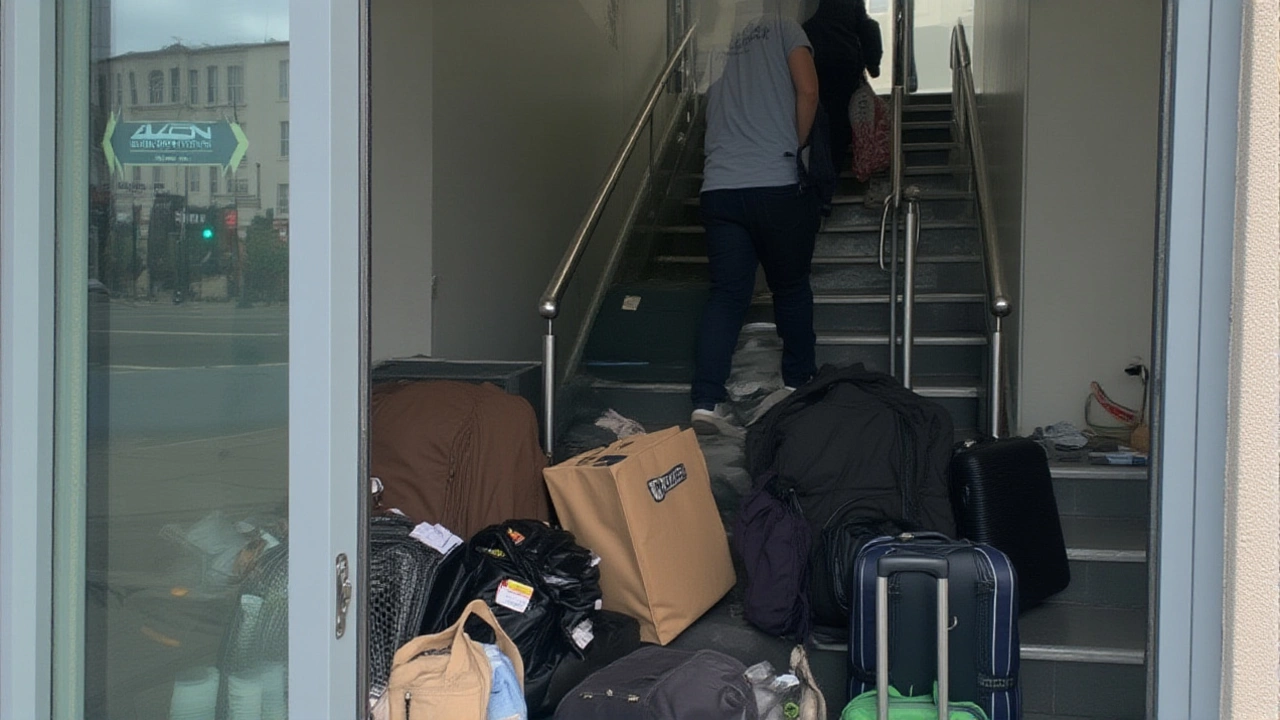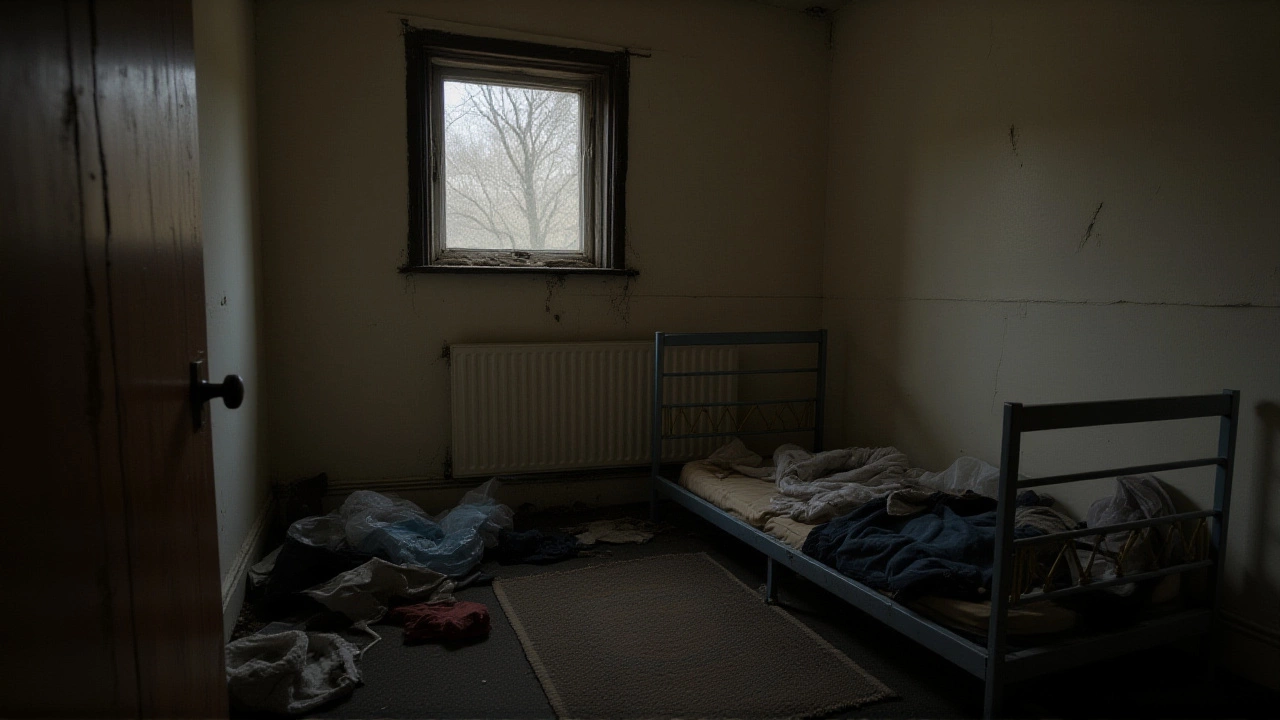When Home Office slashed its asylum‑seeker accommodation budget between April 2024 and March 2025, thousands were thrust into sub‑standard hotels and makeshift sites, sparking a wave of safety failures that have left families living in squalor and fear.
- More than 1,500 asylum seekers were crammed into each hotel, cutting average costs by ≈ 15%.
- Only 500 people were housed in large‑scale sites by Dec 31 2024, far short of the 1,875 target.
- National Audit Office (NAO) found alternative sites cost up to £200 million more than projected.
- Suicidal thoughts reported by at least 12% of surveyed residents.
- Appeal success rose from 62% at first decision to 70% after review.
Background: How the dispersal system works
The UK has, for years, relied on a "dispersal" model that ships asylum seekers to cheaper regions outside London and the South‑East. The logic is simple: lower rent means lower public spend. In practice, the model hands refugees no say over where they live, often dropping them in towns where housing stock is already stretched thin.
Humanitarian groups, especially British Red Cross, have warned that this approach turns accommodation into a revolving door of temporary hotels, each barely meeting basic health standards.
Cost‑cutting measures and their fallout
Between April 2024 and March 2025, the Home Office pursued a two‑pronged strategy: increase the number of occupants per hotel and push for "large‑site" solutions like ex‑military bases and floating vessels. The promise was to shift away from hotel dependence, but the numbers tell a different story.
According to the National Audit Office's 2024 report, projected occupancy for the large sites was wildly optimistic. The agency estimated 1,875 asylum seekers would be housed by January 2024, yet only 900 made it onto those sites, and by the end of the year the figure fell to a mere 500 after the controversial Bibby Stockholm barge was retired.
Cost overruns were staggering. The NAO noted that each large‑site bed ended up costing roughly £1,300 per night—far higher than the £700 average for hotel rooms the Home Office was trying to replace.
Safety failures: the Bibby Stockholm episode
The most glaring example of the system’s flaws unfolded on the Bibby Stockholm barge. In August 2023, Dorset City Council’s environmental health officers warned that legionella bacteria might be thriving in the vessel’s water system.
Yet the barge stayed occupied for four days after the warning, with 39 asylum seekers aboard. It wasn’t until August 11 that an evacuation took place, after fire‑safety concerns—insufficient fire escapes, lack of drills, and faulty air vents—were flagged in a separate inspection.
Contractor CTM defended its role, stating, "Our services, which we seek to provide to the very best of our ability, have been used by a number of successive governments for a multitude of travel‑related needs." The statement rang hollow to advocates who saw the barge as a floating prison.

Human impact: stories from the ground
For many, the numbers translate into daily indignities. A family of five, whose asylum claim has lingered for three years, lives in a cramped hotel room where the disabled son cannot access a wheelchair‑friendly bathroom. Their only outlet is a small kitchen that has become a breeding ground for mold.
Another household with complex medical needs was placed on a first‑floor flat with no elevator, forcing a mother to carry her elderly mother up stairs twice a day. "We feel like a test case for a cruel experiment," the mother told a Red Cross volunteer, tears staining the thin pillow cover she’d been using for weeks.
These conditions have taken a mental‑health toll. The Red Cross reports that at least twelve percent of surveyed asylum seekers have experienced suicidal thoughts, directly linking the despair to the endless uncertainty and the squalor of their surroundings.
Legal and policy ramifications
The asylum‑industrial complex, as dubbed by Refugee Action, is not merely a broken system—it is deliberately punitive. The organization argues that private contractors reap billions in taxpayer‑subsidised profit while the state “outsources misery.”
Appeal statistics underscore systemic flaws. Between 2019 and 2022, 43% of initial decisions were appealed, and of those, 42% resulted in a successful overturn. Consequently, grant rates rose from 62% at first decision to 70% after appeal, suggesting that many original refusals were made on shaky grounds.

What’s next for the UK’s asylum housing
Parliamentary committees are now demanding a full review of the dispersal model. Critics call for a shift toward community‑based housing, where asylum seekers can stay with vetted sponsors in safe neighborhoods, reducing reliance on hotels and large‑site experiments.
Meanwhile, the Home Office has pledged to halt further cost‑cutting measures until an independent audit of safety standards is completed. Whether that promise translates into real change remains to be seen, but the pressure from NGOs, cross‑party MPs, and the public is building fast.
Frequently Asked Questions
How does the housing crisis affect asylum‑seeker families with disabilities?
Families like the one with a disabled son often end up in first‑floor flats without lifts or in cramped hotel rooms lacking wheelchair access. This forces caregivers to navigate stairs daily, worsening health conditions and limiting access to necessary medical equipment.
What safety concerns were raised about the Bibby Stockholm barge?
Environmental health officers flagged a potential legionella outbreak on 7 August 2023, and fire‑safety inspections later revealed too few escape routes, missing fire drills, and malfunctioning air vents. The barge was only evacuated four days after the initial warning.
Why did the large‑site accommodation plan fall short of its target?
The NAO found that planners over‑estimated occupancy rates and underestimated set‑up costs. By December 2024, just 500 asylum seekers were housed in these sites, well below the 1,875 originally promised for January 2024.
What impact have appeal outcomes had on overall grant rates?
Appeals have boosted grant rates from 62% at first decision to about 70% after review. Roughly 43% of initial refusals are appealed, and 42% of those appeals succeed, indicating systemic issues in the first‑instance decision process.
What alternatives are being proposed to replace the hotel‑centric model?
Advocates suggest community‑based placements with vetted sponsors, construction of purpose‑built asylum housing that meets health standards, and a halt to the use of private contractors that profit from low‑quality accommodation.






